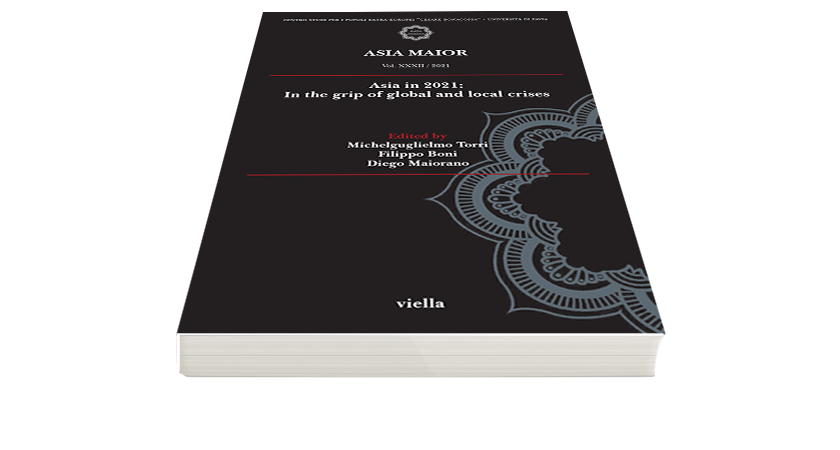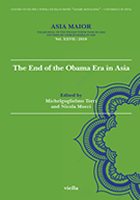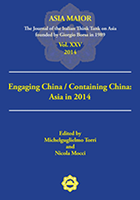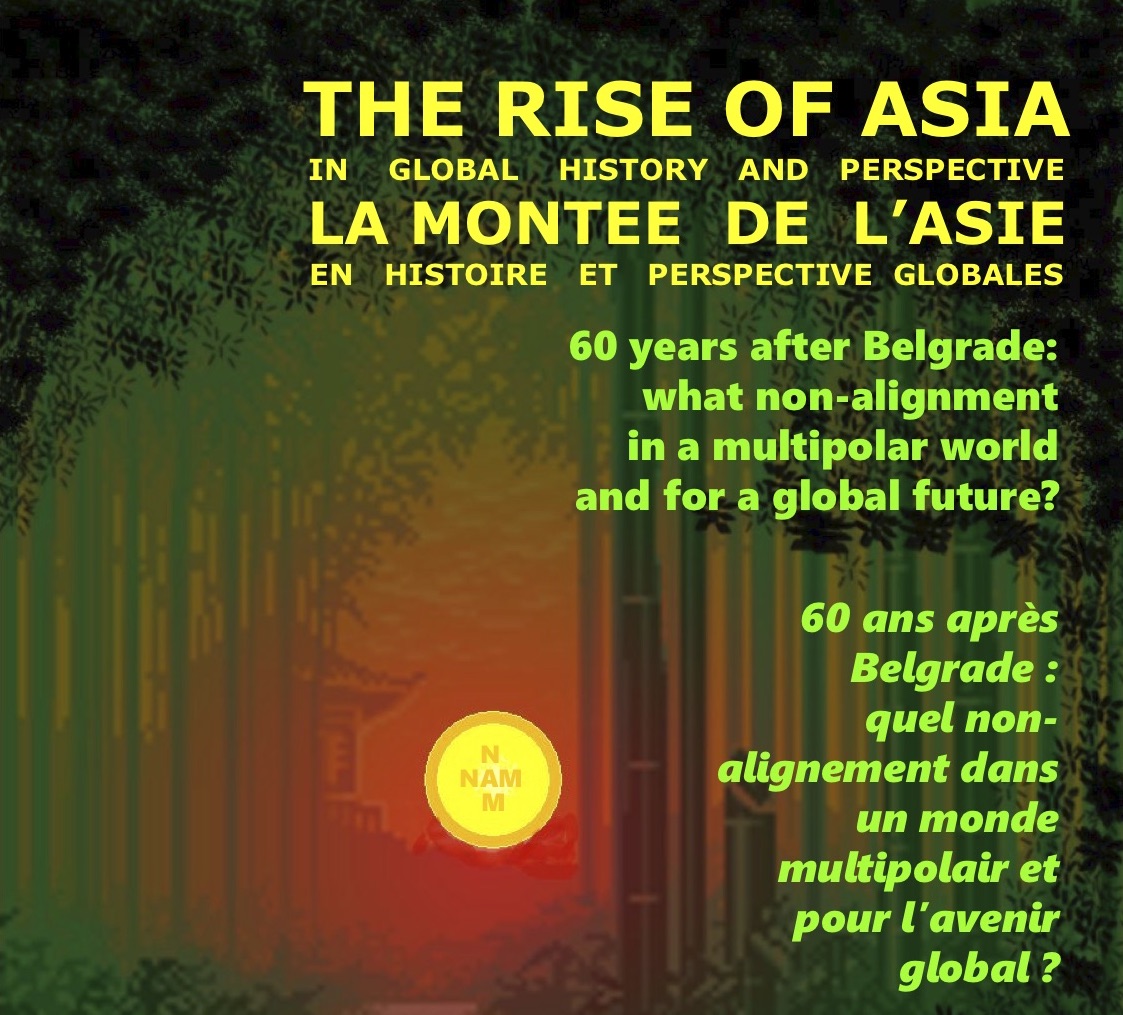An «alternative» reading of the relations between Europe and China during the Cold War
Available also in pdf – Download Pdf
Janick M. Schaufelbuehl, Marco Weiss & Valeria Zanier (eds.), Europe and China in the Cold War. Exchanges Beyond the Bloc Logic and the Sino-Soviet Split, Leiden-Boston: Brill, 2019, 242 pp. (ISBN: 9789004388123).
In the last few years, the relations between Europe and China during the Cold War captured the attention of a growing number of scholars in both the West – as a direct consequence of the declassification of diplomatic documents that contributed to shedding light on the dynamics between the two sides – and the People’s Republic of China (PRC). In most cases, the perspective adopted reflected the vision that for a long time has resumed these relations as «a story of Eastern Bloc versus Western Bloc confrontation» (p. 1), with very few exceptions.1 Such a vision made it difficult, if not impossible, to grasp the nuances and understand the role played by the smaller countries and non-State actors in their relations with PRC and the methods used by Beijing to transcend the Iron curtain and expand its reach into Western Europe.
The main contribution of this edited book is related to the fact that it goes beyond the traditional separation in Cold War historiography between Eastern and Western Europe, offering a more comprehensive picture of Sino-European interactions. A second relevant contribution resides in adopting a global history approach that includes non-State and transnational actors, thus surpassing the «big power» narrative and illustrating the significance of the Cold War for ordinary people.
Written by a group of scholars who initially met at a conference organized at the University of Lausanne in November 2016 entitled The Smaller European Powers and China in the Cold War, 1949-1989, the book offers a fascinating account of the relations between PRC and some European counterparts during the Cold War. The list of selected countries is peculiar since those included generally played secondary albeit relevant roles, especially considering the neutral status of some among them, or their adherence to the Soviet bloc, without nonetheless being totally encompassed by it. Indeed, for some of the selected countries, such as Switzerland, Austria and Greece, it is the first time they have become the object of academic studies on the issue (chapters 1, 2, 3). Regarding other countries that were part of the socialist bloc, such as Czechoslovakia, Poland, and the Democratic Republic of Germany (chapters 8, 9, 10), it is interesting to observe their will to preserve their close relationships with Beijing after the Sino-Soviet split, showing a partial or full independence from Moscow. A similar logic was adopted by some non-state actors, as the case of the Italian Communist Party demonstrates (chapter 5), which tried to continue bilateral exchanges with the Chinese Communist Party as a sign of independence from the Soviet Union (p. 146). The authors refer to a myriad of international archives sources (mainly Western ones), including, among others, collections of papers of governments, political parties, associations, relevant political leaders, and other influential personalities. The scarcity of Chinese primary sources represents the only limitation. Still, it is mainly due to the restricted access to Chinese archives not only to Western scholars but, depending on the topic, to Chinese scholars as well.
The book is divided into three sections, including different chapters that examine specific problems.
The first section – significantly titled Unexplored Relations between Western Europe and China – contains three essays dedicated to the PRC’s relations with Austria, Switzerland, and Greece, focused on the entire duration of the Cold War or on specific years. Chapter 1 (by Maximilian Graf and Wolfgang Mueller) represents the first academic account of Austrian-Chinese relations during the Cold War based on Austrian, German, Swiss, and U.S. archival sources and shows how Vienna was ready to recognize the PRC early on for political and economic reasons. Recognition, however, was prevented at first by considerations about the four-power control2 and the Cold War dynamics, as well as by the outbreak of the Korean War. After 1955 the Vienna government wished neither to renounce the support of the Republic of China (ROC), namely Taiwan, for Austria’s UN membership and its bid for having the IAEA seat in Vienna, nor to compromise Austria’s relations with the U.S.
The contents of chapter 2 (by Ariane Knüsel) are schematically summarized in its title – Small country – Great Importance: Switzerland and the Chinese Presence in Europe during the 1950s and the 1960s. While the Swiss government does not seem to have played a significant role in Chinese foreign or economic relations with Western Europe, an in-depth study of the available archival sources clearly shows that Switzerland played a crucial role in several aspects of Sino-European ties during the 1950s and 1960s. In fact, Switzerland was the most critical hub for Chinese diplomatic and business networks and Chinese intelligence and propaganda networks in Western Europe during the Cold War. Switzerland’s location in central Europe and the fact that various international organizations like the UN had their (European) headquarters in the country meant that China could quickly meet officials and citizens from other countries that had diplomatic missions there (p. 45). In this sense, despite its small size, the country was of great importance to China’s presence in and relations with Western Europe (p. 59) and also with African and Latin American countries (p. 48). Chapter 3 (by Dionysios Chourchoulis) is dedicated to Sino-Greek ties, which scholars and contemporary political leaders considered peripheral compared to others during the Cold War. Indeed, Greece was a small and relatively poor country, with very little to offer to China, especially in terms of technology and expertise. The PRC had neither the ability nor the will to get significantly entangled in the Eastern Mediterranean and South-Eastern Europe since its main goal and concern remained the containment of Soviet power and influence in this region. In this regard, Beijing was willing to support significant Western institutions, such as NATO and the EEC. That said, from Athens’ perspective, it was essential to improve relations with the PRC to readjust Greek foreign policy to current trends in international affairs, such as China’s reintegration into the global system.
The second section – Transnational Networks, Propaganda, and People-to-People Relations – focuses on the relevance of non-state actors (friendship associations, youth associations, opposition parties) in the relations between their home governments and the PRC. While chapter 4 (by Cyril Cordoba and Liu Kaixuan) focuses on the development of the friendship associations with China in France and Switzerland from the 1950s to the 1980s amid the various twists and turns of the PRC’s general internal and foreign policy, chapter 5 (by Sofia Graziani) deals with the prominent role played by the China Youth League (CYL) at both the domestic level and within the framework of China’s people-to-people diplomacy and political outreach activities. CYL served, in fact, as «a tool for the realization of both the CCP’s goals and the country’s national interests» (p. 127). Reflecting on the CYL engagement with the World Federation of Democratic Youth, the author contends that international «front» organizations provided the newly formed PRC with precious opportunities to build contacts and develop exchanges with Western European youth. These links proved crucial to projecting its image as a peaceful and friendly country worldwide. Chapter 6 (by Guido Samarani) offers a periodization of the history of bilateral relations between the Italian Communist Party (PCI) and the CCP from the mid-1950s to the mid-1960s, relying mainly on first-hand documents, especially writings and memories by several PCI leaders. It emerges how the PCI leaders generally viewed the CCP’s revolutionary experience and politics flexibly as a positive development, function of China’s nationally rooted specificities. Of course, it was a positive judgement based on the PCI’s own national experience and its search for a more autonomous role internationally (p. 146). Interestingly, even during the years marked by the divergences between Beijing and Moscow, the controversies and divisions within the international communist movement, and by substantial freezing of the Italian and Chinese communist bilateral relations – due to their conflicting views on some fundamental questions – the PCI continued its battle to avoid a political condemnation of the CCP by Moscow and by the International Communist movement. At the same time, the PCI continued and even intensified its political and parliamentary battle aiming at Italy’s recognition of the PRC (p. 147). The last chapter of the section (chapter 7 by Chi-kwan Mark) focuses on Sino-British relations in Hong Kong in the 1950s and 1960s, with special reference to how the Hong Kong and British governments dealt with the problem of «everyday propaganda» by the local left-wing supported by the PRC, through the local New China News Agency – which served as China’s de facto embassy in the territory – and the leftist newspapers. As reported by the author, the British were well aware that China’s influence and propaganda were «a facet of ‘everyday life’» (p. 152) that could only be contained but not eliminated (p.168).
The third and last section – Eastern Europe and China: National Interests and Ideology – includes essays dedicated to the experiences of some countries that, despite being part of the Soviet orbit, tried to pursue their national interests in relations with communist China. Chapter 8 (by Jan Adamec) focuses on Sino-Czechoslovak multifaceted ties in the 1950s, which were essentially, but not exclusively, determined by the relationship between China and the Soviet Union and their increasing tensions after 1958 (p. 175). In particular, the chapter analyzes the strategies adopted by Czechoslovak leaders to enter the vast Chinese market during the pivotal period of the second half of the decade and the difficulties encountered in concluding long-term trade agreements and securing future economic cooperation. The analysis is based on a vast corpus of Czechoslovak archival documents that demonstrate how poorly informed were Czechoslovak politicians about the actual situation inside the PRC and the complicated interactions between Beijing and Moscow (p. 189). The focus of chapter 9 (by Margaret K. Gnoinska) is Sino-Polish relations through the experience of the so-called Chipolbrok (Sino-Polish Joint Shipping venture), China’s first-ever joint venture, created in 1951. This enterprise contributed to China’s economic development, especially in the first half of the 1950s, and proved crucial during the Korean War when the U.S. and the UN tightened the economic embargo on China. The Chipolbrok connection also served as a constant in the Sino-Polish relationship during the 1950s, when State, party, economic, military, and cultural ties deteriorated due to Poland’s decision to side with Moscow in the Sino-Soviet split officially. The available documents suggest that despite the ideological differences, the two countries regarded the venture as economically and politically advantageous. Emblematic it is that Chipolbrok withstood the end of the Cold War and continues to operate today. The last chapter (by Chen Tao) deals with the relations between PRC and the German Democratic Republic that witnessed a honeymoon period between 1949 and 1959, allowing extensive contacts in various fields. Its focus is on the introduction by the Socialist Unity Party of certain Chinese political practices in East Germany, with particular reference to the Mass Line of the CCP – a rectification campaign to bring party cadres closer to the masses. Based on the accessible bilateral sources from both German and Chinese archives, the chapter analyses the introduction, implementation, and functioning of the Mass Line in the East Germany National People’s Army (Nationale Volksarmee, NVA), as well as its final repeal. This result was mainly related to domestic factors – complaints and grievances from NVA officers, the increasing financial burden – rather than to foreign ones, such as the Sino-Soviet split (p. 232).
Although this is a collection of historical essays on a broad range of topics, it is possible to find some leitmotifs throughout the book. First, the authors demonstrate that the bloc mentality could not inhibit the exchange of ideas and trade between China and the selected countries. In fact, in their approach toward China, these states tended to prioritize their national interests over political affiliations and ideological differences. Second, almost every essay underscores the relevance of the economic drive in the European actors’ relations with the PRC. Most European countries were highly interested in the Chinese market from the 1950s onwards (p. 6). For instance, the ambition of gaining or maintaining access to the Chinese market played a determining role for Switzerland, Austria, and Greece in their decision to recognize Beijing. In the case of the three countries under the Soviet orbit analyzed in this volume, China represented an excellent opportunity to compensate for the loss of Western markets caused by the Cold War division of Europe (p. 13). For its part, the PRC saw these Eastern European countries as an alternative market for China’s raw materials and foodstuffs and a source of industrial products (ibidem). Third, almost all authors refer to the lack of Chinese archival sources due to the restriction of Chinese archives, which represents a significant limitation for scholars (p. 3). Indeed, this last problem constitutes the «only» limitation of this outstanding edited book, which represents a fundamental contribution to the historiography of its subject and an enriching reading for both scholars and advanced students of China History and Politics, Europe Politics, and International Relations. The book is worth reading and studying since it represents a fascinating «alternative» account of China-Europe dynamics during the Cold War, where the bloc logic and the Sino-Soviet split were significant but did not play a determining role in the relations between the two sides.
1. One of the most notable is the volume edited by E. Fardella, C.F. Ostermann & C. Kraus, Sino-European Relations During the Cold War and the Rise of a Multipolar World: A Critical Oral History, Washington D.C.: Woodrow Wilson Center, 2015. See also Guido Samarani, Carla Meneguzzi Rostagni, Sofia Graziani (eds.), Roads to Reconciliation. People’s Republic of China, Western Europe and Italy During the Cold War Period (1949-1971), Edizioni Ca’ Foscari, Venezia, 2018.
2. The Allied Controlled Agreement of 1946 required that Austria’s establishment of diplomatic relations with non-member states of the UN were subject to the authorization of the four occupying powers: the USA, the USSR, the UK and France.





































